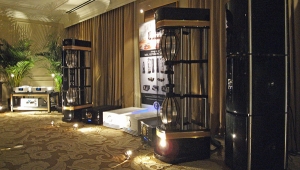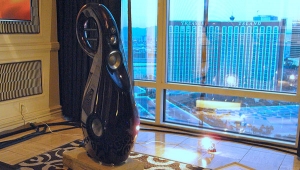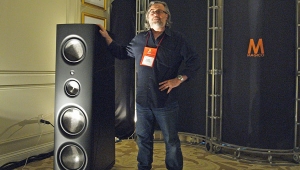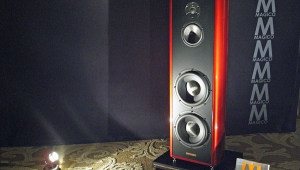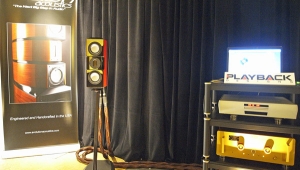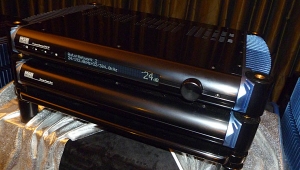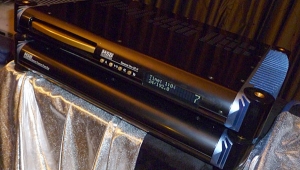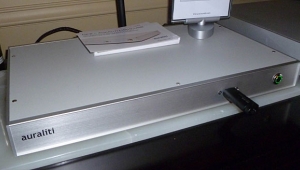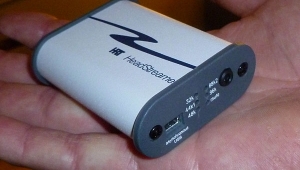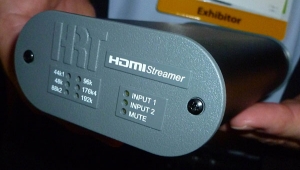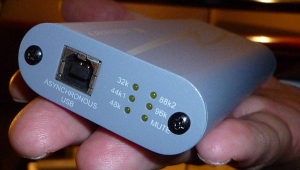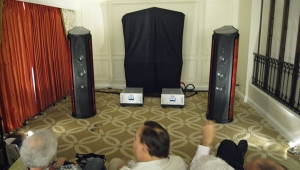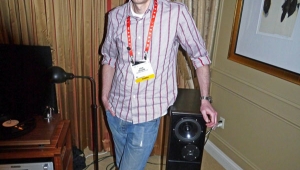| Columns Retired Columns & Blogs |
High-Efficiency Non-Switching Amp from THX
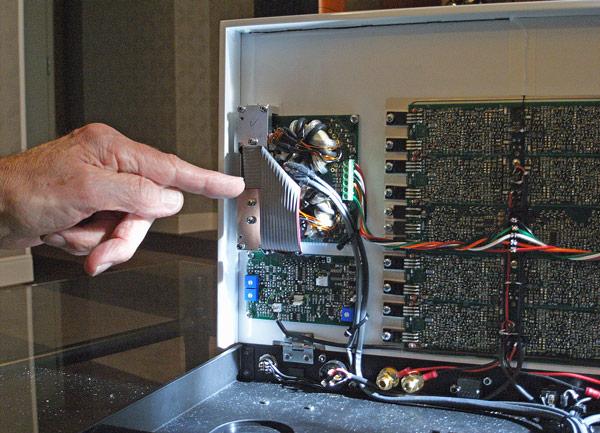
When I gave my Richard Heyser Memorial Lecture at last October's AES Convention, THX's Laurie Fincham was sitting in the audience. Afterwards, Laurie whetted my appetite for what the company would be presenting at CES: a patented non-switching power amplifier topology that would be as efficient as a class-D amplifier but without the side-effects that afflict such designs, high levels of radiated RF, for example. In the photo, Laurie is pointing to the power supply of the amplifier. DC is fed to two oscillators running at 25kHz, one generating a sinewave, the other a cosinewave, ie 90° out of phase with the sinewave. Each wave feeds a transconductance amplifier in the primary of a tiny transformer; the output of each secondary is rectified and summed to produce a high DC voltage which is then used to power the amplifier circuit. There are no storage capacitors in the circuit—it looks as if almost all the energy entering the supply is available as the final DC voltage! The new topology was developed by Fincham, Owen Jones (the twin brother of TAD's Andrew Jones) and Andrew Mason.
Why this should be so falls into the area of engineering I define as "then a miracle happens," but Laurie demonstrated a prototype 400Wpc (into 8 ohms) amplifier running off six lithium-iron cells driving Sonus Faber Cremona speakers. (Source was a Mac mini feeding a Benchmark DAC1 Pre. It played plenty loud, with excellent dynamics and the chassis barely got warm. "This is what I want in an amplifier," said Fincham, "it's like a car with a really big engine." And unlike a class-D amplifier, where the THD tends to increase in the top octaves, the THX amplifier is said to be almost as linear at 20kHz as it is at 1kHz.
THX will be licensing the topology to amplifier manufacturers who are looking for an amplifier that sips juice from the wall but without having to pay a performance penalty.
- Log in or register to post comments

